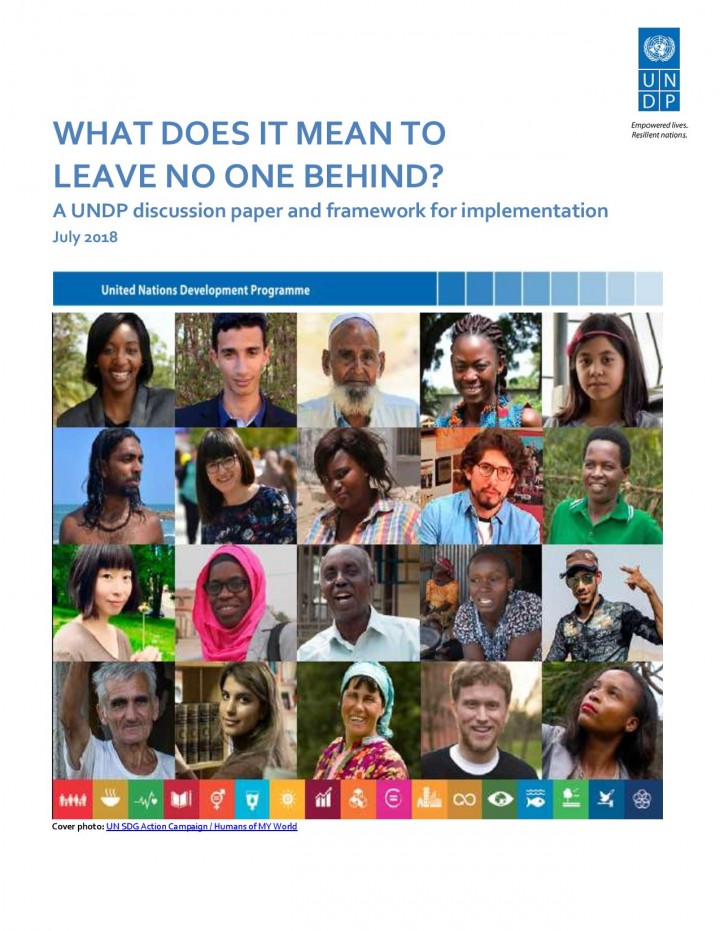What does it mean to leave no one behind? - A UNDP discussion paper and framework for implementation
UNDP (2018)

Published in: 2018
Pages: 29
Publisher:
United Nations Development Programme (UNDP), New York, United States
Author:
UNDP
Uploaded by:
Lara Nassar
984 Views
7 Downloads
With the adoption of the 2030 Agenda, UN Member States pledged to ensure “no one will be left behind” and to “endeavour to reach the furthest behind first”.
This paper advances a framework that governments and stakeholders can use to act on their pledge in a way that enables and accelerates progress to achieve the Sustainable Development Goals (SDGs). It also seeks to inform the manner in which UNDP works with countries to implement the 2030 Agenda.
Five factors are proposed as key to understanding who is being left behind and why: discrimination; place of residence; socio-economic status; governance; and vulnerability to shocks.
The factors can be applied using a three-pronged approach: to examine the disadvantages people face in and across the five factors; empower those who are being left behind [or who are at risk of being left behind]; and to enact inclusive, far-sighted and progressive SDG policies.
Bibliographic information
UNDP (2018). What does it mean to leave no one behind? - A UNDP discussion paper and framework for implementation. United Nations Development Programme (UNDP), New York, United States
Filter tags
English















